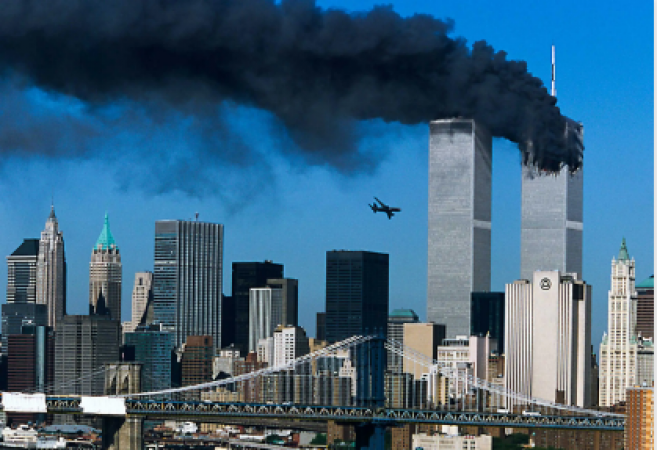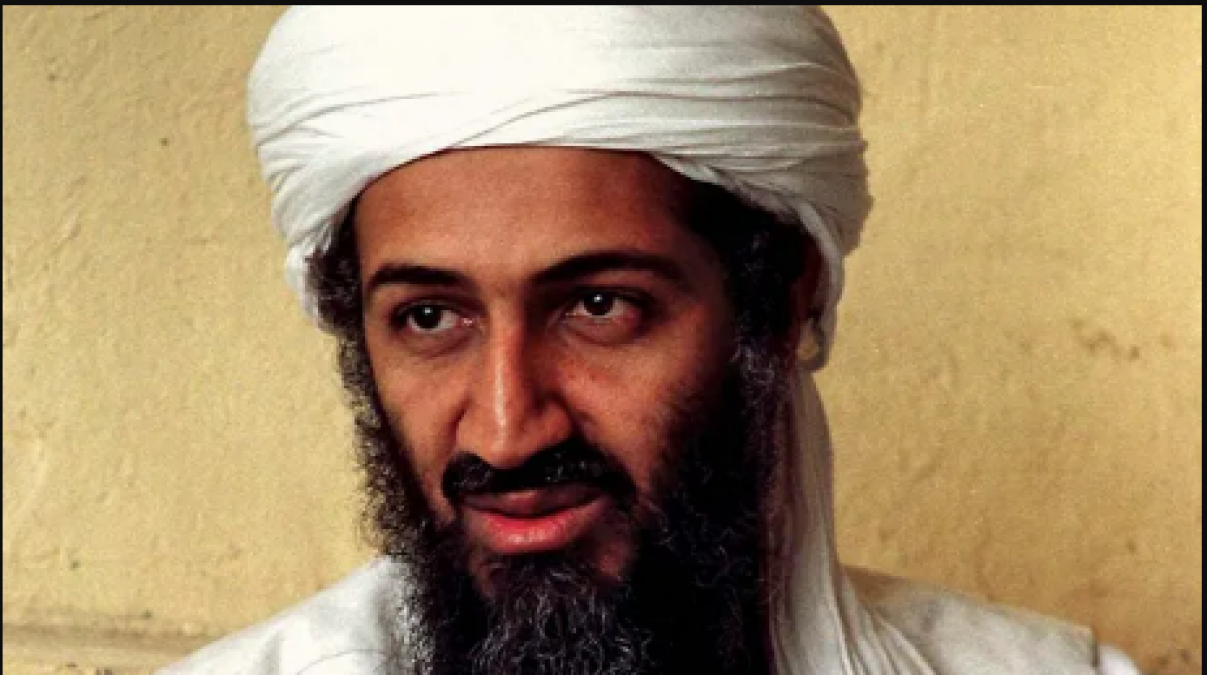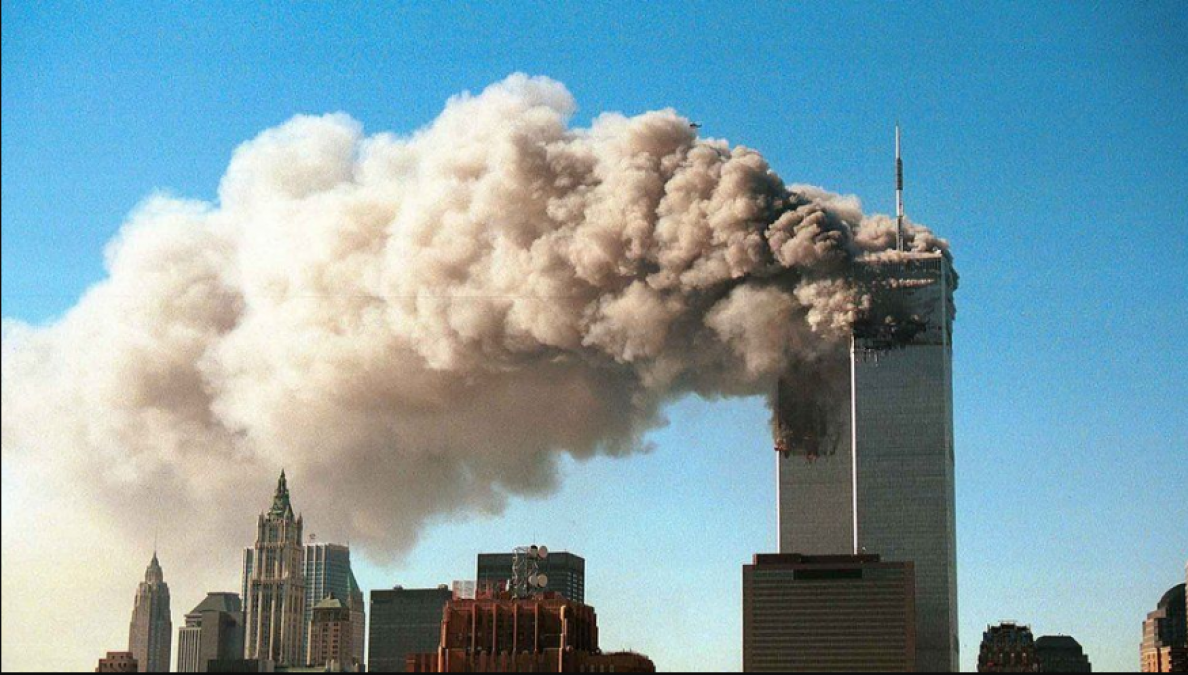
India: The September 11 attacks, also known as the 9/11 attacks, were a series of airline hijackings and suicide attacks in 2001 against targets in the United States by 19 terrorists affiliated with the Islamic extremist group al-Qaeda. The series was, and was, the deadliest terrorist attack in American history on American soil.
New York City and Washington, D.C. The attacks caused widespread death and destruction and sparked large-scale counter-terrorism efforts in the United States. In New York, 2,750 people were killed, 184 at the Pentagon, and 40 in Pennsylvania (where one of the hijacked planes crashed after passengers attempted to retrieve the plane); All 19 terrorists were killed.
New York's police and fire departments were particularly badly affected: hundreds of people rushed to the scene and more than 400 police officers and firefighters were killed.
The September 11 attacks were initiated by Osama bin Laden, the leader of the largely militant Islamist organization al-Qaeda, who held nave assumptions about the United States being responsible for the attacks. According to Abu Walid al-Masri, an Egyptian who was bin Laden's ally in Afghanistan in the 1980s and 1990s, bin Laden became convinced of America's weakness in the years before the attacks.
 Osama Bin laden
Osama Bin laden
"He believed that the United States was much weaker than some of the people around him," Masri recalled, and "he saw as evidence what happened to the United States in Beirut when Marine Base was attacked." The bombing prompted them to flee Lebanon," referring to the 1983 bombing of the Marine barracks in Beirut, which killed 241 American soldiers (see 1983 Beirut barracks bombings). Bin Laden saw the United States as a "paper tiger", influenced not only by the US withdrawal from Lebanon after the bombing of the Marine barracks, but by the Americans from Somalia in 1993 after the death of 18 US soldiers in Mogadishu. was also affected by the withdrawal of the army. and the American withdrawal from Vietnam in the 1970s.
Khalid Sheikh Mohammed (often referred to in the later 9/11 Commission Report and the media as "KSM") was the principal operations planner of the September 11 attacks. Khalid Sheikh Mohammed joined the Muslim Brotherhood at the age of 16, and he later moved to the United States to attend college, graduating from North Carolina Agricultural and Technical State University in 1986. After that, he traveled to Pakistan and then to Afghanistan to do wages. Jihad against the Soviet Union, which invaded Afghanistan in 1979.

Khalid Sheikh Mohammed "the principal architect of the 9/11 attacks
According to Arabic-language cable television channel Al Jazeera journalist Yossari Fauda, who interviewed him in 2002, Khalid Sheikh Mohammed planned to fly a dozen American planes over Asia in the mid-1990s, a conspiracy (known as "bojinka"). Gaya) failed, "But Khalid Sheikh Mohammed's dream never faded away." And I believe, holding bin Laden's hand in hand, he realized that now he has a chance to make his long-awaited dream come true."
Khalid Sheikh Mohammed met bin Laden in Tora Bora, Afghanistan in 1996. The 9-11 Commission (formally the National Commission on Terrorist Attacks on the United States), was established in 2002 by President George W. Bush and the United States Congress to investigate. The 2001 attacks stated that Khalid Sheikh Mohamed "submitted a proposal for an operation that would involve training pilots to crash planes into buildings in the United States." The tactical innovation of using hijacked planes to attack the United States was devised by Khalid Sheikh Mohammed, with al-Qaeda providing personnel, money, and military support to carry out the operation, and bin Laden in New York and Washington. But converted the attacks into one. The larger strategic structure to attack the United States - the "distant enemy" - to bring regime change to the Middle East.
The September 11 conspiracy demonstrated that al-Qaeda was a global organization. The conspiracy surfaced around the world, including planning meetings in Malaysia, activists learning to fly in the United States, conspiracy leaders based in Hamburg, Germany, money transfers from Dubai, and suicide activists from countries throughout the Middle East. Recruits—all who were eventually under the supervision of al-leader Qaeda in Afghanistan.
In Hamburg, key elements of the September 11 conspiracy took shape. Four key pilots and planners in the "Hamburg cell" who would conduct operational control of the September 11 attacks, including lead hijacker Mohamed Atta, met an Islamist terrorist on a train in Germany in 1999, who set about fighting jihad. Talked to him. In the Russian Republic of Chechnya. The terrorist put the Hamburg cell in contact with an al-Qaeda operative in Germany, who explained that it was difficult to get to Chechnya at the time because many travelers were being detained in Georgia. He suggested that they travel to Afghanistan instead.
Although Afghanistan was critical to al-rise, Qaeda's it was the experience gained by some of the plotters in the West that made them both more zealous and better equipped to carry out the attacks. While living in Hamburg, three of the four plotters who would fly the hijacked planes on September 11th, as well as one of the key planners, Ramzi Binalshibh, became more radical. Some combination of perceived or real discrimination, alienation, and homesickness appears to have pushed them all toward greater militancy. They gradually radicalised each other as they cut themselves off from the outside world, and eventually the friends decided to fight in bin Laden's global jihad, setting off for Afghanistan in search of al-Qaeda in 1999.
Atta and the other members of the Hamburg group arrived in Afghanistan in 1999, just as the September 11 plot was taking shape. Bin Laden and his military commander, Muhammad Atef, recognised that Atta and his fellow Western-educated jihadists were far better suited to lead the attacks on Washington and New York than the men they had already recruited, prompting bin Laden to appoint Atta as the operation's commander.
The hijackers, the majority of whom were Saudis, had established themselves in the United States for some time prior to the attacks. They travelled in small groups, with some receiving commercial flight training.
Throughout his time in the US, Atta kept Binalshibh informed of the plot's progress via e-mail. To conceal his activities, Atta wrote the messages as if he were writing to his girlfriend "Jenny," using innocuous code to inform Binalshibh that their training and preparation for the attacks were nearly complete. In one message, Atta stated, "The first semester begins in three weeks... Nineteen private education certificates and four exams." The 19 "certificates" referred to were code that identified the 19 al-Qaeda hijackers, while the four "exams" identified the targets of the attacks.
On the morning of August 29, 2001, Atta called Binalshibh and asked him to solve a riddle: "Two sticks, a dash, and a cake with a stick down—what is it?" " After giving the question some thought, Binalshibh realised that Atta was telling him that the attacks would take place in two weeks—the two sticks representing the number 11 and the cake with a stick down representing the number 9. Putting it all together, it meant that the attacks would take place on 11-9, or September 11th (in most countries the day precedes the month in numeric dates, but in the United States the month precedes the day; hence, it was 9-11 in the United States). Binalshibh left Germany for Pakistan on September 5.Once there, he dispatched a messenger to Afghanistan to inform bin Laden of the date and scope of the attack.
The attacks

On September 11, 2001, groups of attackers boarded four domestic planes at three East Coast airports and disabled the crews, some of whom may have been stabbed with box cutters hidden by the hijackers. The hijackers then took control of the aircraft, which were all large and headed for the West Coast with full fuel loads. The first plane, American Airlines Flight 11, was piloted into the north tower of the World Trade Center in New York City at 8:46 a.m. Most observers initially mistook this for an accident involving a small commuter plane. United Airlines flight 175, also from Boston, crashed into the south tower 17 minutes later. There was no doubt that the United States was under attack at this point. The impact severely damaged each structure, causing it to burst into flames. Office workers trapped above the points of impact jumped to their deaths rather than face the inferno raging inside the towers. At 9:37 a.m., American Airlines Flight 77, departing from Dulles Airport near Washington, D.C., collided with the southwest side of the Pentagon (just outside the city), sparking a fire in that section of the structure. Within minutes, the Federal Aviation Administration ordered a nationwide ground stop, and the fourth aircraft, United Airlines flight 93 from Newark, New Jersey, crashed near Shanksville in the Pennsylvania countryside after its passengers attempted to overpower their assailants after being informed of events via cellular phone.
The heavily damaged south tower of the World Trade Center collapsed at 9:59 a.m., followed by the north tower 29 minutes later. Lower Manhattan's streets quickly filled with clouds of smoke and debris. Office workers and residents fled in terror, attempting to outrun the billowing debris clouds. A number of other buildings near the twin towers were severely damaged, and several collapsed. For more than three months, fires raged at the World Trade Center site.
Rescue operations began almost immediately as the country and the world attempted to comprehend the magnitude of the losses. Nearly 3,000 people were killed: 2,750 in New York, 184 at the Pentagon, and 40 in Pennsylvania; all 19 terrorists were also killed. More than 400 police officers and firefighters were among those killed in New York City after rushing to the scene and into the towers.
On September 11, 2001, President Bush was visiting a second-grade classroom in Sarasota, Florida, when he learned that a plane had crashed into the World Trade Center. A few moments later, his chief of staff, Andrew Card, whispered in the president's right ear, "A second plane hit the second tower." "America is being attacked." To keep the president safe, Bush flew across the country on Air Force One, landing in Washington, D.C. on the evening of the attacks. At 8:30 p.m., Bush delivered a speech from the Oval Office outlining a key doctrine of his administration's future foreign policy: "We will make no distinction between the terrorists who committed these acts and those who supported them."
On September 14, Bush paid a visit to "Ground Zero," the smoking pile of debris that was the World Trade Center and the thousands who died there. Bush, who was standing on top of a wrecked fire truck, grabbed a bullhorn and addressed the rescue workers who were working feverishly to find any survivors. When one of the workers complained that he couldn't understand what the president was saying, Bush made one of his most memorable remarks: Bush's strong response to the attacks increased his poll ratings from 55% favourable before September 11 to 90% favourable in the days following, the highest ever recorded for a president.
First US-led Indo-Pacific Economic Framework seen as "incredible success"
US and Allies Disapprove of the Normalization of the Situation in Afghanistan
Foreign businesses in China fighting for survival prepare for whatever comes next